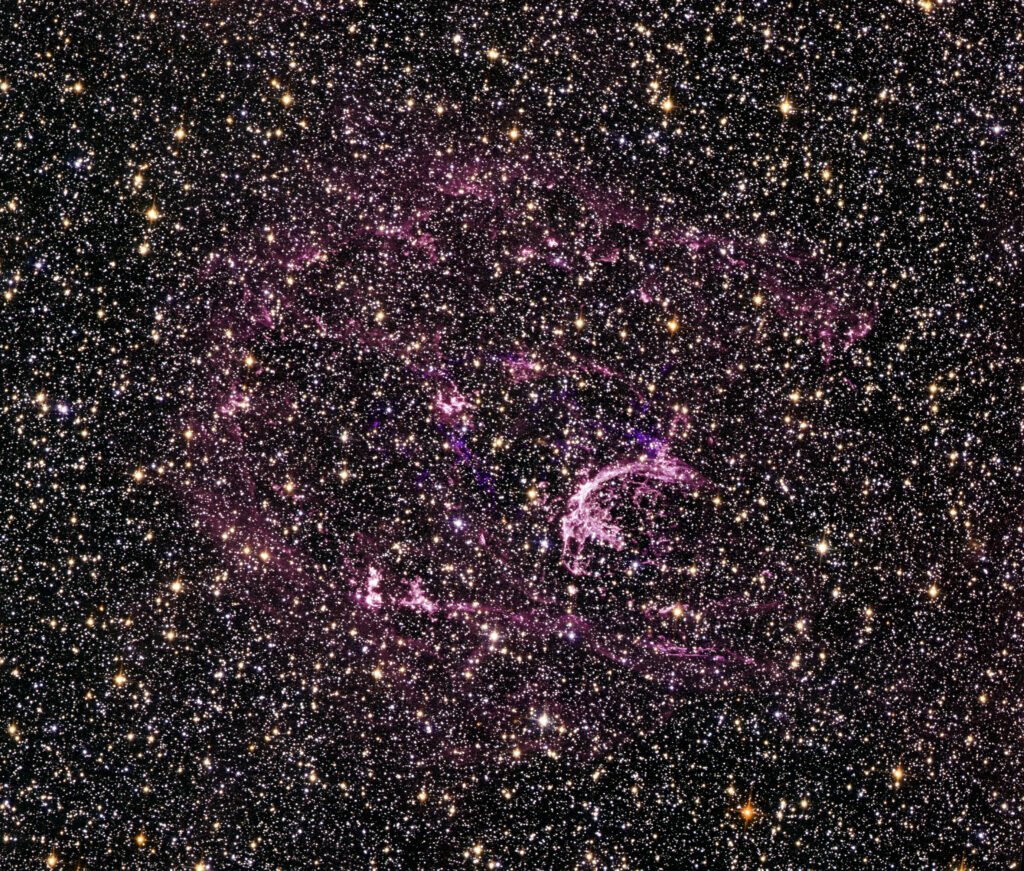Astronomers have reported the first discoveries made by the new X-ray telescope XRISM. He managed to study in detail the supernova remnant and look into the neighborhood of the black hole.
Anatomy of a dead star
What do a giant black hole and the remnants of an exploded star have in common? They are surrounded by extremely hot gas that produces high-energy X-rays. Japan’s XRISM telescope, launched last year, was designed specifically to study such radiation.

One of XRISM’s first targets was the supernova remnant N132D. It is located in the Large Magellanic Cloud at a distance of about 160,000 light-years from Earth. This interstellar bubble of hot gas was created by the explosion of a very massive star that occurred about 3,000 years ago.
XRISM has studied the structure around N132D in detail. Contrary to previous assumptions of a simple spherical shell, the scientists found that the N132D remnant has the shape of a doughnut. Using the Doppler effect, they measured the velocity of the hot plasma, and found that the structure is expanding at about 1200 km/s.

The study also found that the supernova remnant contains iron, which has an unusually high temperature of 10 billion degrees Celsius. Atoms heated up during the supernova explosion due to strong shock waves propagating inside. This phenomenon was predicted by theory but had never been observed before.
Supernova remnants like N132D contain important clues about how stars evolve and how heavy elements essential for our life, including the already mentioned iron, are formed and distributed in interstellar space. However, previous X-ray observatories have always had difficulty determining the velocity and temperature of the plasma. With XRISM, astronomers have a unique opportunity to study supernova remnants.
Doughnut around a supermassive black hole
XRISM has also shed new light on the mysterious structure surrounding the supermassive black hole. It is at the center of the spiral galaxy NGC 4151, located 62 million light-years away from Earth. Its mass is 30 million times that of the Sun.

XRISM has recorded the distribution of matter that spins around the black hole and eventually falls into it over a fairly wide radius, from 0.001 to 0.1 light-years. That is, approximately from a distance comparable to the distance between the Sun and Uranus to a distance 100 times greater.
By determining the motion of iron atoms from their X-ray signal, the scientists mapped the sequence of structures surrounding the black hole: from the disk that “feeds” it to the doughnut-shaped torus. These findings have become crucial building blocks in our understanding of how such objects grow. Although radio and infrared observations have previously revealed the presence of such structures around black holes at the centers of galaxies, the XRISM spectroscopic technique is the first and so far only way to track how gas forms and moves near these “monsters.”
According to the researchers, this is just the beginning. In recent months, they have been actively working on adjusting the XRISM instrumentation and improving data analysis techniques. So we can expect more exciting discoveries in the near future.
According to ESA


